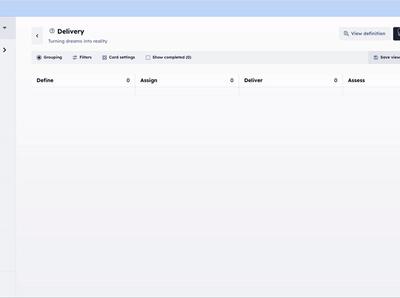2024: The year to 'achieve more with less'?

Growth - Big Tech
Let's start with a bit of reflection on 2023.
With the disruption of Covid behind us, 2023 was seemingly a year of growth, especially when viewed through the lens of share index performance, such as the S&P500 stock market index of the largest US companies.
Big Tech stocks have seen impressive returns with “The Magnificent Seven” (Apple, Microsoft, Alphabet, Amazon, Nvidia, Meta and Tesla) averaging 111% return compared with a 24% return for the broader S&P500.
And a 24% return for the S&P500 is very healthy for an index that has a historic annualised return of around 10.26% since 1957.
Impact of AI
2023 was also a year of excitement, exploration and engagement with Generative AI. Many of us now use AI-based platforms such as ChatGPT, Synthesia and Midjourney regularly in our work environment, often to assist with creative content. It feels that in some respects the art of creativity is being usurped by algorithms.
McKinsey’s AI thought leader Alexander Sukharevsky is quoted as saying “Similar to what the internet did to distribution, generative AI does to creativity, meaning the marginal cost of producing a movie, a slide, a legal recommendation, goes close to zero at a significantly faster rate,” [Fortune.com] He goes on to say “Seventy percent of employees’ tasks today could be automated,” predicting that “in 20 years, 50% of them will be automated.”
While creative industries/roles have ironically been hit first, this permeates through every industry where human tasks can be automated. I recently came across Harriet, an early-stage HR AI tool that aims to answer the HR questions (e.g. policy, leave etc.) without the need to engage a human HR administrator. This seems a promising AI-led solution to the problem of HR self-service and to reduce forward need for HR administrative resources.
So, on the one hand there is huge potential for AI to make working life easier and for people to work more efficiently; but in so doing also the opportunity to displace current jobs.
We have seen Big Tech announce significant job cuts during 2023 with signs that they are starting to ramp up again. In May 2023, BT announced that it aims to axe up to 55,000 jobs by 2030, representing as much as 40% of its workforce, specifically citing 10,000 of those jobs to be replaced by AI. Other leading companies with large job cut announcements in 2023 included UBS (35,000), Accenture (19,000), Amazon (18,000) and Vodafone (11,000). Most recent announcements (Jan'24) include Telefonica (3,000) and 15% of Xerox workforce (3,000). There is also some media discussion from CNBC and others suggesting as many as 30,000 additional job cuts to come at Google, specifically citing AI.
And its probably worth reflecting on Elon Musk laying off up to 80% of the Twitter workforce. I will avoid the contentious subject of whether it has led to a better or worse business but the idea that a broadly similar business could be run with just 20% of the workforce would seem to hard to contemplate for most. This surely raises an important question (and not just for businesses with thousands of employees): Could our business run more efficiently?
Macro-economic indicators
Notwithstanding the geopolitical situation, there appear to be strong financial headwinds as we enter 2024, with global government debt at all-time highs, alongside higher central bank base rates than at any time since the Global Financial Crisis of 2008, driving up the cost of borrowing for businesses and individuals.
In just 5 days of 2023 we saw multiple regional US banks collapse (SVB, Signature and First Republic) and in the same month Credit Suisse in Europe collapsed. Some alternative media macro-economic bloggers (like George Gammon on Kitco News) have questioned whether we have actually seen the end of this crisis.
The cost of living crisis - a result of inflation (which is ultimately a result of money supply) - is a major issue which central banks are forced to try to control. One of the main instruments used by central banks to cool demand (and in so doing reduce inflation) is to increase base rates. But, reducing demand clearly has repercussions for growth.
Mainstream media is now flagging potential recession outcomes in 2024 for the UK, US and others. Alternative media have argued for some time that we have been in recession. What seems clear is getting growth through goods and services is proving very challenging but employment rates are generally high.
Some of the leading indicators, specifically job vacancies and forward-looking statements by leading companies on workforce reduction would appear to support recessionary fears; as do lagging indicators such as employment and demand for certain asset classes (e.g. property and vehicles).
So what does this mean for 2024?
Conclusions
Macro-uncertainty is arguably one of the biggest enemies for business investment as confidence is linked to certainty. It’s a question of how comfortable the banks and other investors are in achieving the desired return on their investment. Another enemy is liquidity, be it the banks having the availability of capital to invest or VCs having the funds to invest in businesses with high growth prospects. And in my experience, when confidence starts to go, it has a cascading downward effect.
It feels to me like the macro-uncertainty has substantially shifted over the last 18 months. Following the 2023 regional bank failures, in the US increasing capital requirements are being imposed that will inevitably reduce the availability of capital for companies to invest.
We all know past performance is not a reliable indicator of future performance which could be very relevant to business results and share indexes as we move from 2023 into 2024.
It feels like we have entered a period where companies really are forced to look at how they can achieve more with less. Less investment, less resources and possibly less demand. And this is where technology can be a part of the answer. AI is a catalyst for innovative new ways of delivering the same or better outcomes at a fraction of the cost.
It will be those companies that have the people with the aptitude to challenge the way things are being done, explore new ways of working and are willing to embrace disruptive technologies that should thrive in 2024.
That’s my opinion … what do you think?
Relevance to Modlify
We believe in a future in which creating software to run businesses should be so simple, anyone should be able to create what they need with just a few commands. We are on a journey to empower teams to build their own solutions.
Today, with Modlify, business people can create their team workspace using AI or with easy-to-use modelling tools. Within just a few minutes, new ways of working can be deployed that gets the team working with clarity on what needs doing, why, when and by who (be that machine or human); free-form datasets enable collaboration on key business information and integrations with tools like Slack and Teams keeps everyone informed without undue annoyance.
In this way we help teams be laser focused, put an end to paying for tools that are way too big for the need, reduce dependency on expensive consultants to build core business solutions and create a more adaptive business systems landscape that can grow with your business. This is how modlify helps our customers achieve more with less.


